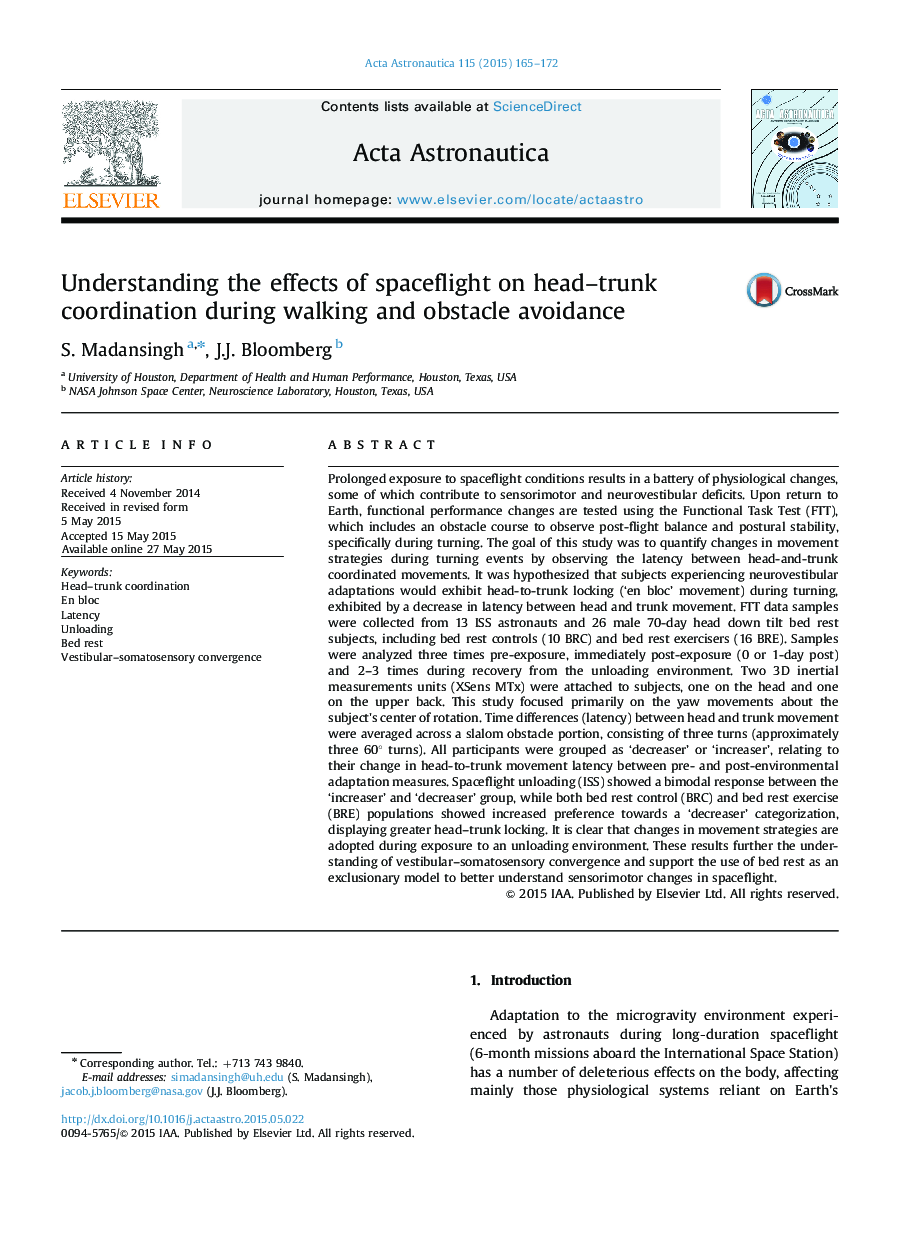| کد مقاله | کد نشریه | سال انتشار | مقاله انگلیسی | نسخه تمام متن |
|---|---|---|---|---|
| 8056411 | 1519939 | 2015 | 8 صفحه PDF | دانلود رایگان |
عنوان انگلیسی مقاله ISI
Understanding the effects of spaceflight on head-trunk coordination during walking and obstacle avoidance
ترجمه فارسی عنوان
درک اثرات فضاپیما بر روی هماهنگی تنه در حین قدم زدن و جلوگیری از موانع
دانلود مقاله + سفارش ترجمه
دانلود مقاله ISI انگلیسی
رایگان برای ایرانیان
موضوعات مرتبط
مهندسی و علوم پایه
سایر رشته های مهندسی
مهندسی هوافضا
چکیده انگلیسی
Prolonged exposure to spaceflight conditions results in a battery of physiological changes, some of which contribute to sensorimotor and neurovestibular deficits. Upon return to Earth, functional performance changes are tested using the Functional Task Test (FTT), which includes an obstacle course to observe post-flight balance and postural stability, specifically during turning. The goal of this study was to quantify changes in movement strategies during turning events by observing the latency between head-and-trunk coordinated movements. It was hypothesized that subjects experiencing neurovestibular adaptations would exhibit head-to-trunk locking ('en bloc' movement) during turning, exhibited by a decrease in latency between head and trunk movement. FTT data samples were collected from 13 ISS astronauts and 26 male 70-day head down tilt bed rest subjects, including bed rest controls (10 BRC) and bed rest exercisers (16 BRE). Samples were analyzed three times pre-exposure, immediately post-exposure (0 or 1-day post) and 2-3 times during recovery from the unloading environment. Two 3D inertial measurements units (XSens MTx) were attached to subjects, one on the head and one on the upper back. This study focused primarily on the yaw movements about the subject׳s center of rotation. Time differences (latency) between head and trunk movement were averaged across a slalom obstacle portion, consisting of three turns (approximately three 60° turns). All participants were grouped as 'decreaser' or 'increaser', relating to their change in head-to-trunk movement latency between pre- and post-environmental adaptation measures. Spaceflight unloading (ISS) showed a bimodal response between the 'increaser' and 'decreaser' group, while both bed rest control (BRC) and bed rest exercise (BRE) populations showed increased preference towards a 'decreaser' categorization, displaying greater head-trunk locking. It is clear that changes in movement strategies are adopted during exposure to an unloading environment. These results further the understanding of vestibular-somatosensory convergence and support the use of bed rest as an exclusionary model to better understand sensorimotor changes in spaceflight.
ناشر
Database: Elsevier - ScienceDirect (ساینس دایرکت)
Journal: Acta Astronautica - Volume 115, OctoberâNovember 2015, Pages 165-172
Journal: Acta Astronautica - Volume 115, OctoberâNovember 2015, Pages 165-172
نویسندگان
S. Madansingh, J.J. Bloomberg,
